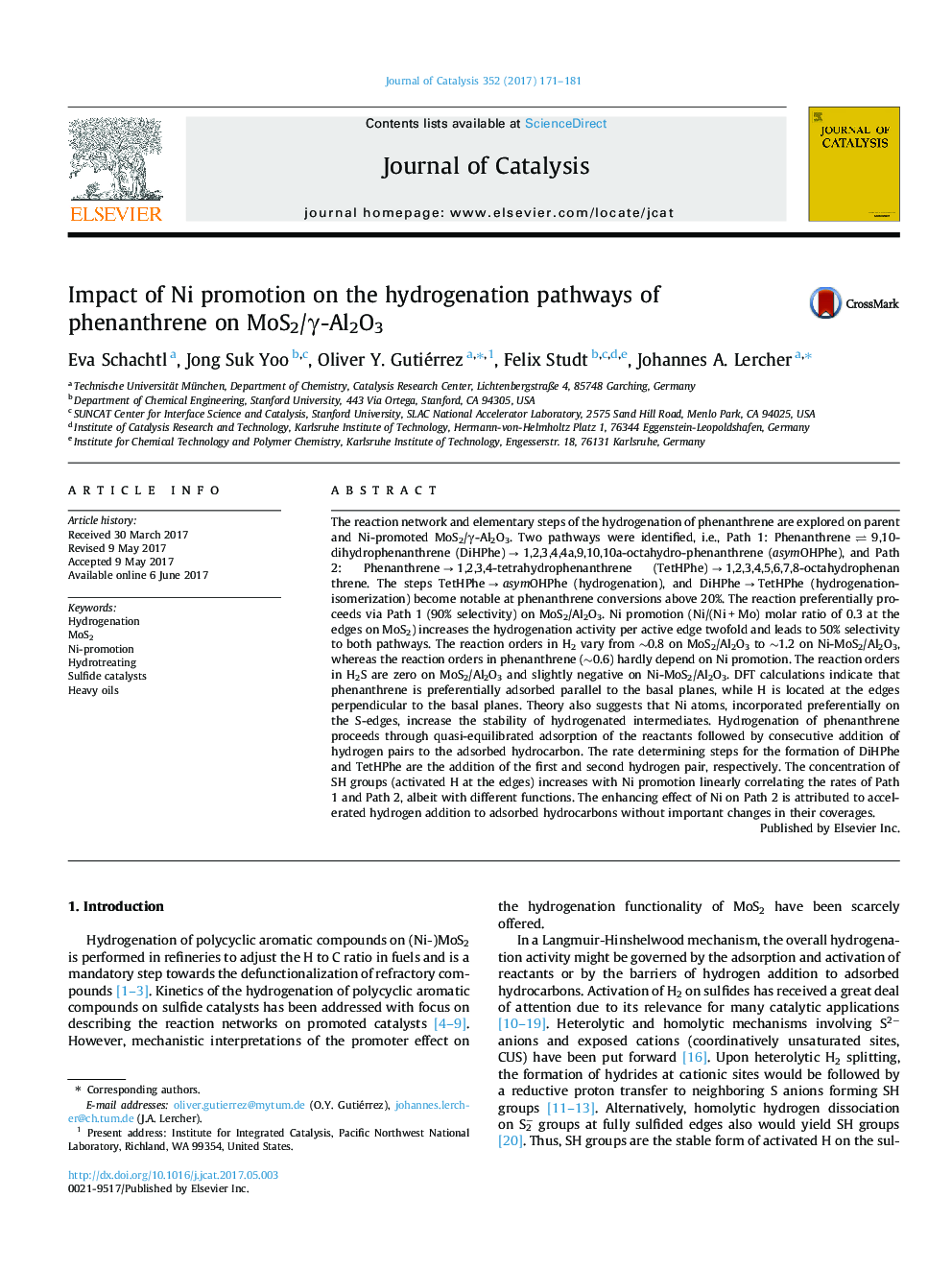| Article ID | Journal | Published Year | Pages | File Type |
|---|---|---|---|---|
| 6455364 | Journal of Catalysis | 2017 | 11 Pages |
â¢Kinetic study of the hydrogenation of polyaromatic compounds on (Ni-)MoS2/Al2O3.â¢Ni decorating the MoS2 phase increases its dispersion and concentration of active H.â¢Reduced activation barriers accelerate H addition to the aromatic on promoted edges.â¢Rate determining step (L-H mechanism) shifts from the first to the second H-pair addition.â¢Thus, hydrogenation is faster and deeper on Ni-promoted sites than on unpromoted sites.
The reaction network and elementary steps of the hydrogenation of phenanthrene are explored on parent and Ni-promoted MoS2/γ-Al2O3. Two pathways were identified, i.e., Path 1: Phenanthrene â 9,10-dihydrophenanthrene (DiHPhe) â 1,2,3,4,4a,9,10,10a-octahydro-phenanthrene (asymOHPhe), and Path 2: Phenanthrene â 1,2,3,4-tetrahydrophenanthrene (TetHPhe) â 1,2,3,4,5,6,7,8-octahydrophenanthrene. The steps TetHPhe â asymOHPhe (hydrogenation), and DiHPhe â TetHPhe (hydrogenation-isomerization) become notable at phenanthrene conversions above 20%. The reaction preferentially proceeds via Path 1 (90% selectivity) on MoS2/Al2O3. Ni promotion (Ni/(Ni + Mo) molar ratio of 0.3 at the edges on MoS2) increases the hydrogenation activity per active edge twofold and leads to 50% selectivity to both pathways. The reaction orders in H2 vary from â¼0.8 on MoS2/Al2O3 to â¼1.2 on Ni-MoS2/Al2O3, whereas the reaction orders in phenanthrene (â¼0.6) hardly depend on Ni promotion. The reaction orders in H2S are zero on MoS2/Al2O3 and slightly negative on Ni-MoS2/Al2O3. DFT calculations indicate that phenanthrene is preferentially adsorbed parallel to the basal planes, while H is located at the edges perpendicular to the basal planes. Theory also suggests that Ni atoms, incorporated preferentially on the S-edges, increase the stability of hydrogenated intermediates. Hydrogenation of phenanthrene proceeds through quasi-equilibrated adsorption of the reactants followed by consecutive addition of hydrogen pairs to the adsorbed hydrocarbon. The rate determining steps for the formation of DiHPhe and TetHPhe are the addition of the first and second hydrogen pair, respectively. The concentration of SH groups (activated H at the edges) increases with Ni promotion linearly correlating the rates of Path 1 and Path 2, albeit with different functions. The enhancing effect of Ni on Path 2 is attributed to accelerated hydrogen addition to adsorbed hydrocarbons without important changes in their coverages.
Graphical abstractDownload high-res image (131KB)Download full-size image
